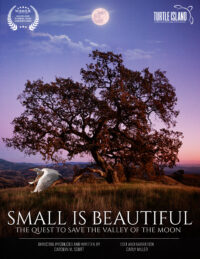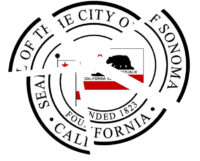Global warming, drought, flooding and pollution – some might ask, “What can one person do?” Stewardship groups at the Sonoma Ecology Center (SEC) are answering the question by their collective action: working together to learn about and work for the health of Sonoma’s streams.
The stewardship groups do what one individual property owner cannot. As SEC Stewardship Program Manager geomorphologist Lisa Micheli, Ph.D, pointed out, “If you want to do something in your stream, you need to get eight different regulatory agencies’ permits to sign off.” But if you are part of a stewardship group, the SEC negotiates the permits. Part of the strength of the stewardship groups is in the numbers of hands available for projects.
At their meeting Nov. 13, about 20 stewards from the Lower and Upper Kenwood groups and the Adobe Canyon Stewards joined together to form the Kenwood Sonoma Creek Stewardship Group, which will continue to work on projects that aim to enhance the health of streams and reduce flooding and erosion, while preserving and protecting private property. The projects, said stewardship coordinator Julie Jehly, are landowner-initiated and supported by technical and other assistance from the Sonoma Ecology Center.
One big success so far, Micheli said, is the debris management work being done by Keith Hanover and his group. In times of flooding, when big trees come down, if he’s alerted, he and his group can go and help move or remove the debris so that dams don’t form, causing local flooding.
Other projects include well monitoring, which, Micheli explained, involves sticking a probe down a well to see the depth of the water. Over time, it’s possible to see if the water table is going up or down in that location. “It’s incredibly important data,” she said, assuring the group that there is no regulatory component to this monitoring. It’s purely for information.
During her illustrated presentation on watershed dynamics, Micheli stressed the importance of streams, noting that scientists are just realizing that the most important way water gets into the aquifer is through the stream channel. Thus the health of fish, which she said are the indicators of the health of the stream, bodes well or ill for the health of the aquifer and the water supply for humans.
A resident whose property is vulnerable to flooding asked if there could be a community warning system. Hanover said it was difficult to keep everyone informed. “We’re struggling with folks who don’t have e-mail – how do we keep everybody in the loop?” Micheli said the Water Agency had just added another gauge. She said she is hoping for a number of automated stations.
Someone asked what more individuals can do, and Micheli pointed out that one does not need to live on a stream to be a steward. All are welcome to join and learn and help. Besides looking for well volunteers, she said, they are also looking for stream bank landowners, who may not be stewards, to grant access to their property so that monitoring projects can be as complete as possible.
Their next meeting will be in May.
Sonoma Ecology Center’s stewardship groups meet to combine forces
More from What's HappeningMore posts in What's Happening »




